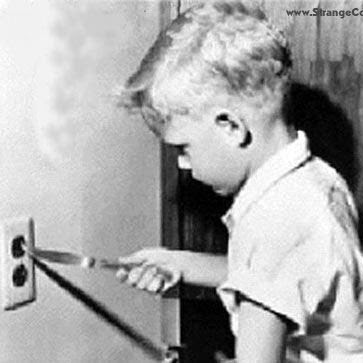Mark Joseph Melone
age ~45
from Bartlett, IL
- Also known as:
-
- Mark J Melone
- Mark E Melone
- Mark Melone Declaration Of
- Mario J Melone
- Mary A Melone
- Mark E Malone
- Michael Mims
- Phone and address:
-
287 Windsor Dr, Hanover Park, IL 60103
6308861013
Mark Melone Phones & Addresses
- 287 Windsor Dr, Bartlett, IL 60103 • 6308861013
- Hanover Park, IL
- 1338 Mulloy Dr, Addison, IL 60101
- 1135 Singleton Dr, Roselle, IL 60172
- Arlington Heights, IL
- Canyon Cntry, CA
- Van Nuys, CA
Us Patents
-
Wireless Power Transfer System With Extended Wireless Charging Range
view source -
US Patent:20220407358, Dec 22, 2022
-
Filed:Mar 4, 2022
-
Appl. No.:17/686745
-
Inventors:- Chicago IL, US
Oleg Los - Buffalo Grove IL, US
Unnati Wadkar - Bangalore, IN
Jason Luzinski - Chicago IL, US
Nazmul Alam - Lombard IL, US
Mark D. Melone - Frankfort IL, US
Matt Zamborsky - Chicago IL, US
Jacob Babcock - Chicago IL, US
Alberto Peralta - Chicago IL, US
Christine Frysz - Orchard Park NY, US -
International Classification:H02J 50/12
H01F 38/14
H02J 50/40
H01F 27/28
H01F 27/36 -
Abstract:The present application relates to an apparatus which comprises a wireless power transfer (WPT) system. This system comprises features which allow it to transfer more power wirelessly at extended distances than other systems operating in the same frequency range. The system possesses heat dissipation features; these features allow it to operate effectively in elevated-temperature environments, and to transfer power at higher levels and/or greater distances than a typical power-transfer system. The system also might include design features to withstand mechanical shocks, stresses, and impacts for use in a rugged environment. The system can also comprise adaptations to reduce electromagnetic interference (EMI), and can comprise specially shaped components with magnetic/ferrimagnetic properties that enhance performance. Other potential features include power conditioning by combining, within one circuit or one board, multiple elements that protect against excessive current, over-voltage, and/or reverse voltage. Other features might include integration of an antenna and a battery within one module.
-
Dynamic Operation Adjustment In Wireless Power Transfer System
view source -
US Patent:20220407363, Dec 22, 2022
-
Filed:Jun 22, 2021
-
Appl. No.:17/354523
-
Inventors:- Chicago IL, US
Mark Melone - Frankfort IL, US -
International Classification:H02J 50/20
H02J 50/80
H02J 50/12
H04B 5/00
H04B 1/16 -
Abstract:A wireless power transfer system is provided having a wireless transmission system that includes an input to receive input power from an input power source, a transmission antenna, and a transmission controller configured to generate wireless signals based, at least in part, on the input power, the wireless signals including wireless power signals and wireless data signals, and to transmit such wireless signals. The wireless power transfer system further includes a wireless receiver system in a wireless peripheral device, the wireless receiver system having a receiver antenna configured to receive the wireless power signals and wireless data signals via inductive coupling with the transmission antenna, as well as a receiver controller configured to determine the acceleration of the wireless peripheral device, generate a prescribed update frequency based on the detected acceleration, and transmit operational updates to the wireless transmission system at the prescribed update frequency.
-
High Speed Data Communications System For Industrial Use In Packaged Goods
view source -
US Patent:20220239355, Jul 28, 2022
-
Filed:Jan 28, 2021
-
Appl. No.:17/161266
-
Inventors:- Chicago IL, US
Mark Melone - Frankfort IL, US
Jacob Babcock - Chicago IL, US
Alberto Peralta - Chicago IL, US
Jason Luzinski - Chicago IL, US -
International Classification:H04B 7/06
H04B 7/0426
G06Q 10/08
G06F 8/65
H04W 4/80 -
Abstract:A method for providing an electronic device includes manufacturing the electronic device at a manufacturing location, wherein manufacturing the electronic device includes connecting a wireless receiver system to the electronic device. The method further includes packaging the electronic device at a packaging location. The method further includes wirelessly transmitting data to the electronic device at a data transmission site, wherein wirelessly transmitting the data to the electronic device is performed by transferring data via near field magnetic induction utilizing a wireless transmission system, the wireless transmission system configured to magnetically connect with the wireless receiver system associated with the electronic device.
-
Repeater Compatibility Verifier For Wireless Power Transmission System
view source -
US Patent:20230114772, Apr 13, 2023
-
Filed:Oct 7, 2021
-
Appl. No.:17/496487
-
Inventors:- Chicago IL, US
Mark Melone - Frankfort IL, US -
International Classification:H02J 50/50
H04B 7/155
H02J 50/10 -
Abstract:A modular wireless power transfer system includes a first wireless transmission system and a wireless repeater system. The first wireless transmission system is configured to receive input power from an input power source, generate AC wireless signals, and couple with the wireless repeater system. A magnetic sensor system in the first wireless transmission system senses a magnet of specific strength in a specific location on the wireless repeater system. Based on the presence of absence of such a magnet, the first wireless transmission system allows or disallows, respectively, the transmission of the AC wireless signals to the wireless repeater system.
-
Heat Diffuser In Wrist Worn Wireless Power And Data System
view source -
US Patent:20230115141, Apr 13, 2023
-
Filed:Oct 8, 2021
-
Appl. No.:17/497353
-
Inventors:- Chicago IL, US
Michael Katz - Glen Ellyn IL, US
Mark Melone - Frankfort IL, US -
International Classification:H04B 5/00
H02J 50/12
H02J 50/40
H05K 7/20
H04L 1/16 -
Abstract:A rechargeable wearable electronic device includes a wireless power receiver system, a device portion, and a band portion. The wireless power receiver system includes a receiver antenna, a power conditioning system, and a controller. The device portion includes a device housing containing an electronic circuitry module, which includes the wireless power receiver system and a rechargeable power source, wherein the circuitry module generates heat during wireless charging of the rechargeable power source. The band portion is for attaching the wearable electronic device to a user appendage, the band portion having a heat spreading layer of a thermally conductive material, the heat spreading layer having an inner portion within the device housing in thermal contact with the electronic circuitry module, to absorb heat from the electronic circuitry module and spread the absorbed heat to the remainder of the heat spreading layer.
-
Wireless Connector System
view source -
US Patent:20210367451, Nov 25, 2021
-
Filed:Mar 1, 2021
-
Appl. No.:17/188877
-
Inventors:- Chicago IL, US
Pavel Shostak - Chicago IL, US
Alberto Peralta - Chicago IL, US
Jason Luzinski - Chicago IL, US
Jacob D. Babcock - Chicago IL, US
Michael Gotlieb - Chicago IL, US
Glenn E. Riese - McHenry IL, US
Robert Giometti - Buffalo Grove IL, US
Oleg Los - Buffalo Grove IL, US
Unnati Wadkar - Chicago IL, US
Mark Melone - Chicago IL, US -
International Classification:H02J 50/10
H04B 5/00
H05K 9/00
H03H 7/38
H01Q 7/00
H01Q 1/52
H01Q 1/38
H01F 38/14
H02J 50/60
H04B 1/04
H01R 12/70
H05K 1/02
H05K 1/18
H05K 3/36
H03H 11/28
H01Q 1/42
H05K 5/02
H05K 3/40
H05K 1/14
H04B 1/16
H01R 12/52
H01R 12/72
H01R 12/57
H01R 12/73 -
Abstract:Various embodiments of a wireless connector system are described. The system has a transmitter module and a receiver module that are configured to wirelessly transmit electrical energy and/or data via near field magnetic coupling. The wireless connector system is designed to increase the amount of wirelessly transmitted electrical power over a greater separation distance. The system is configured with various sensing circuits that alert the system to the presence of the receiver module to begin transfer of electrical power as well as undesirable objects and increased temperature that could interfere with the operation of the system. The wireless connector system is a relatively small footprint that is designed to be surface mounted.
-
Wireless Power Transmitters With Front End Vehicular Input Power Protection
view source -
US Patent:20210344227, Nov 4, 2021
-
Filed:Apr 30, 2020
-
Appl. No.:16/863703
-
Inventors:- Chicago IL, US
Mark Melone - Frankfort IL, US
Md Nazmul Alam - Lombard IL, US -
International Classification:H02J 50/12
H01Q 7/08
H02J 50/70
H01Q 1/52
H02H 3/20 -
Abstract:A power transmitter for wireless power transfer at extended distances is configured for vehicular utilization. The power transmitter includes vehicular power input regulator configured for receiving input power and filtering the input power to a filtered input power, the vehicular power input regulator including an input protection circuit and a DC/DC voltage converter. The power transmitter further includes a control and communications circuit and an inverter circuit. The power transmitter further includes a coil for transmitting the power signal to a power receiver, the coil formed of wound Litz wire and including at least one layer, each of the at least one layer having N turns, the coil defining, at least a top face and a shielding comprising a ferrite core and defining a cavity, the cavity configured such that the ferrite core substantially surrounds all but the top face of the coil.
-
Wireless Power Transfer System For Simultaneous Transfer To Multiple Devices
view source -
US Patent:20210210985, Jul 8, 2021
-
Filed:Jan 3, 2020
-
Appl. No.:16/733516
-
Inventors:- Chicago IL, US
Jason Luzinski - Chicago IL, US
Mark D. Melone - Frankfort IL, US
Matt Zamborsky - Chicago IL, US
Alberto Peralta - Chicago IL, US -
International Classification:H02J 50/40
H02J 50/10
H02J 50/90 -
Abstract:The present application relates to an apparatus which comprises a wireless power transmission system. This system comprises features which allow it to transfer more power wirelessly to multiple devices simultaneously, each at extended distances than other systems operating in the same frequency range. The system including heat dissipation features, allowing the system to operate effectively in elevated-temperature environments and to transfer power at higher levels and/or greater distances than a typical power-transfer system. The system also may include design features to withstand mechanical shocks, stresses, and impacts for use in a rugged environment. The system may include features to reduce electromagnetic interference (EMI) and/or specially shaped components with magnetic/ferrimagnetic properties that enhance performance. Other potential features include power conditioning by combining, within one circuit or one board, multiple elements that protect against excessive current, over-voltage, and/or reverse voltage.
Name / Title
Company / Classification
Phones & Addresses
Vice-President
Mem Electric Inc
Electrical/Electronic Manufacturing · Electrical Contractor · Electrician · Generator Installers · Home Automation · Electrical Contrs
Electrical/Electronic Manufacturing · Electrical Contractor · Electrician · Generator Installers · Home Automation · Electrical Contrs
1707 Division St, Melrose Park, IL 60160
700 N Iowa Ave, Villa Park, IL 60181
7083380000, 6309939000
700 N Iowa Ave, Villa Park, IL 60181
7083380000, 6309939000
Resumes

Facilities Manager And Ice Technician And Zamboni
view sourceLocation:
Chicago, IL
Industry:
Sports
Work:
Carol Stream Ice Rink United Center Chicago Blackhawks
Facilities Manager and Ice Technician and Zamboni Machanic
Facilities Manager and Ice Technician and Zamboni
Facilities Manager and Ice Technician and Zamboni Machanic
Facilities Manager and Ice Technician and Zamboni
Skills:
Team Building
Coaching
Operations Management
Leadership Development
Microsoft Office
Budgets
Customer Service
Public Speaking
Volunteer Management
Event Planning
Strategic Planning
Event Management
Negotiation
Process Improvement
Fundraising
Community Outreach
Government
Nonprofits
Organizational Development
Recruiting
Employee Relations
Logistics
Human Resources
Facilities Management
Retail
Customer Satisfaction
Sales Management
Employee Training
New Business Development
Transportation
Continuous Improvement
Management Consulting
Coaching
Operations Management
Leadership Development
Microsoft Office
Budgets
Customer Service
Public Speaking
Volunteer Management
Event Planning
Strategic Planning
Event Management
Negotiation
Process Improvement
Fundraising
Community Outreach
Government
Nonprofits
Organizational Development
Recruiting
Employee Relations
Logistics
Human Resources
Facilities Management
Retail
Customer Satisfaction
Sales Management
Employee Training
New Business Development
Transportation
Continuous Improvement
Management Consulting

Mark Melone
view source
Mark Melone
view sourceYoutube
Myspace
Googleplus

Mark Melone
Work:
Intel Corporation - Staff Engineer (2012)
Motorola Mobility - Sr Engineer Manager (2002-2012)
Motorola - Electrical Engineer (1999-2002)
Motorola Mobility - Sr Engineer Manager (2002-2012)
Motorola - Electrical Engineer (1999-2002)
Education:
Purdue University Calumet - Electrical Engineering w/Computer Emphasis, Purdue University - Electrical Engineering w/Computer Emphasis
Tagline:
With friends like me, who needs enemas?

Mark Melone
Work:
NO..... - TISCHLER
KR.....,NO.....
KR.....,NO.....
Education:
???????????????????????????????????, NE MENGE ...
About:
Geboren,gelebt,gestorben(letzt... noch nicht eingetreten) ;-)
Classmates

Mark Melone
view sourceSchools:
Earl Warren Middle School Solana Beach CA 1977-1980, Sunset High School Encinitas CA 1982-1984
Community:
Vint Hargrave, Alma Kerby
Mylife

Mark Mele Roselle IL
view sourceOur people finder tool allows you to find old friends like Mark Melone easily. Get back in touch with the people you miss at MyLife.
Plaxo

Mark Melone
view sourceGet Report for Mark Joseph Melone from Bartlett, IL, age ~45





